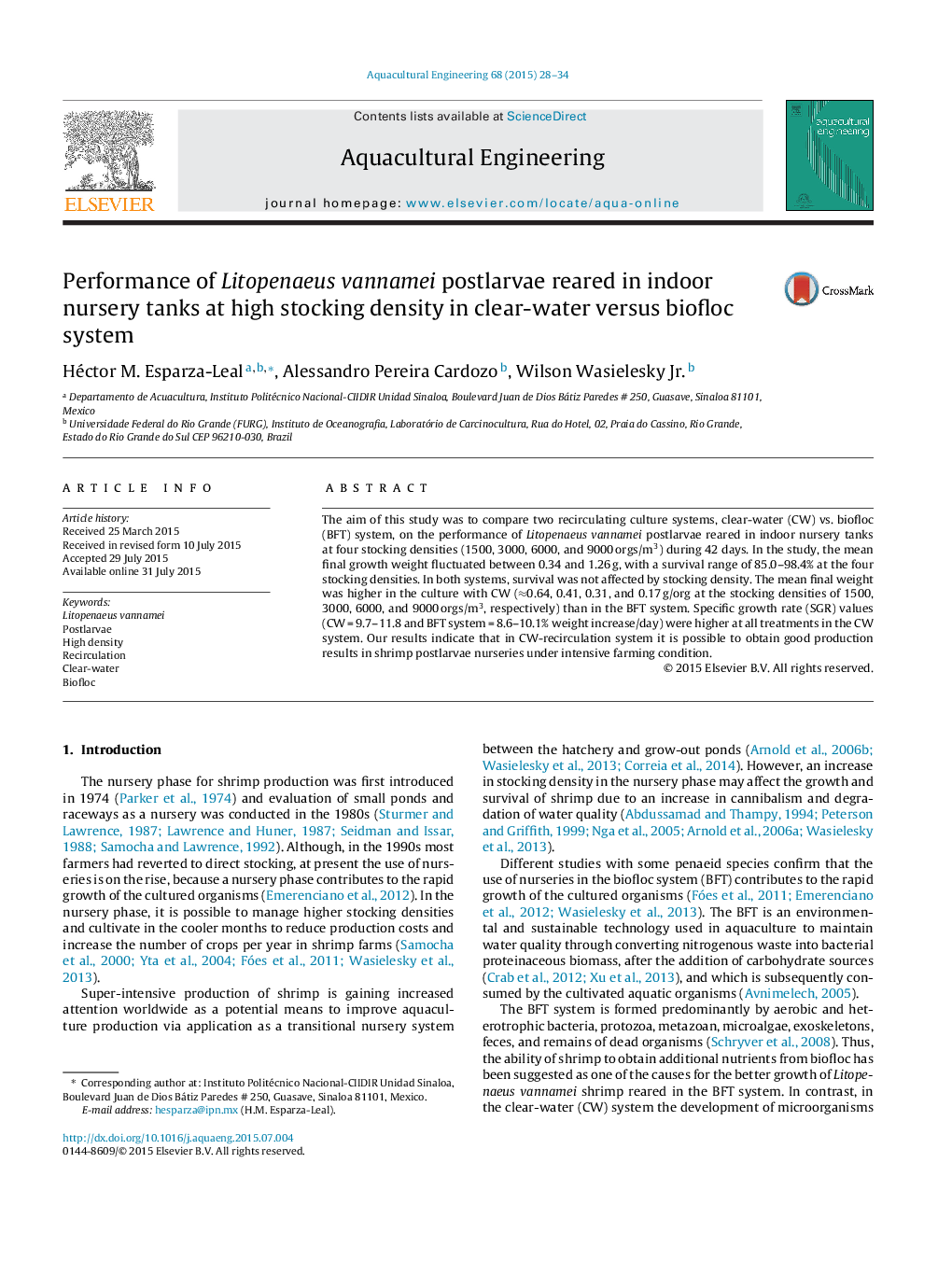| Article ID | Journal | Published Year | Pages | File Type |
|---|---|---|---|---|
| 6381268 | Aquacultural Engineering | 2015 | 7 Pages |
â¢In both system, at 1500, 3000, 6000, and 9000 orgs/m3, survival was not affected by stocking density.â¢At all stocking densities, postlarvae growth was higher in the clear-water than in the BFT system.â¢In both systems, low alkalinity values were obtained.â¢The highest TSS concentration was observed in the BFT system.
The aim of this study was to compare two recirculating culture systems, clear-water (CW) vs. biofloc (BFT) system, on the performance of Litopenaeus vannamei postlarvae reared in indoor nursery tanks at four stocking densities (1500, 3000, 6000, and 9000 orgs/m3) during 42 days. In the study, the mean final growth weight fluctuated between 0.34 and 1.26 g, with a survival range of 85.0-98.4% at the four stocking densities. In both systems, survival was not affected by stocking density. The mean final weight was higher in the culture with CW (â0.64, 0.41, 0.31, and 0.17 g/org at the stocking densities of 1500, 3000, 6000, and 9000 orgs/m3, respectively) than in the BFT system. Specific growth rate (SGR) values (CW = 9.7-11.8 and BFT system = 8.6-10.1% weight increase/day) were higher at all treatments in the CW system. Our results indicate that in CW-recirculation system it is possible to obtain good production results in shrimp postlarvae nurseries under intensive farming condition.
